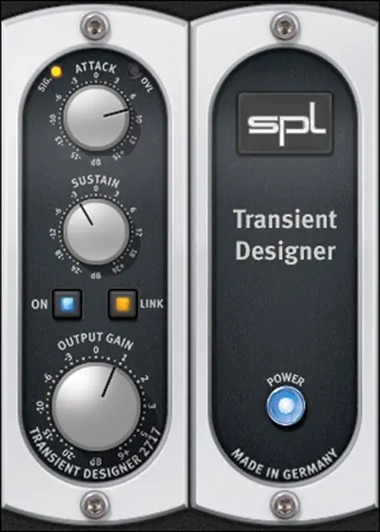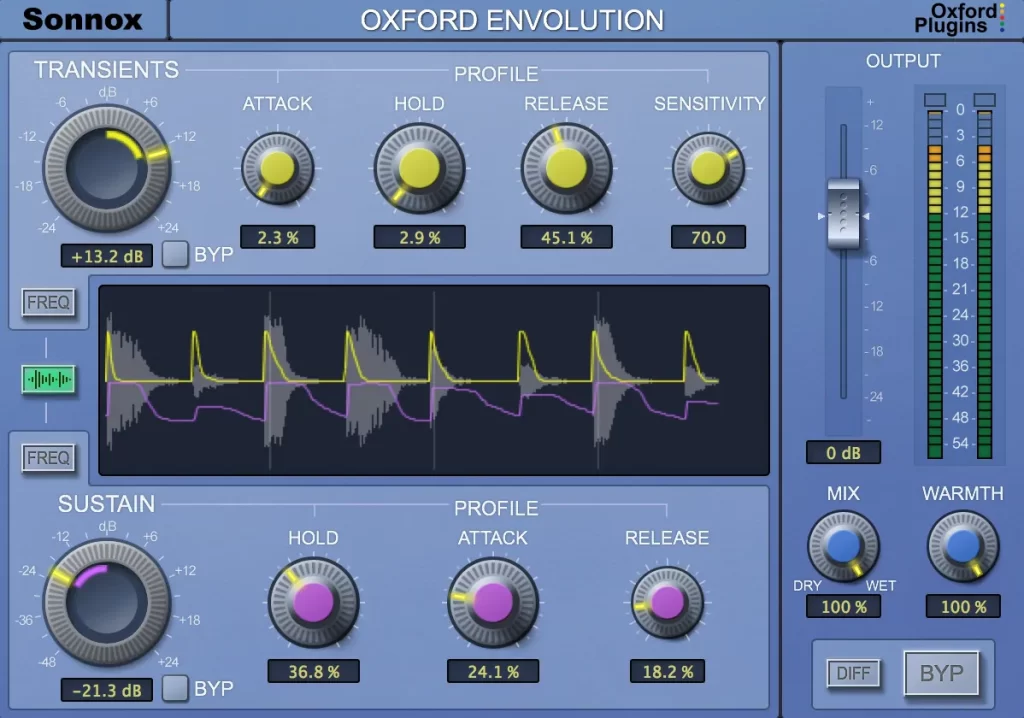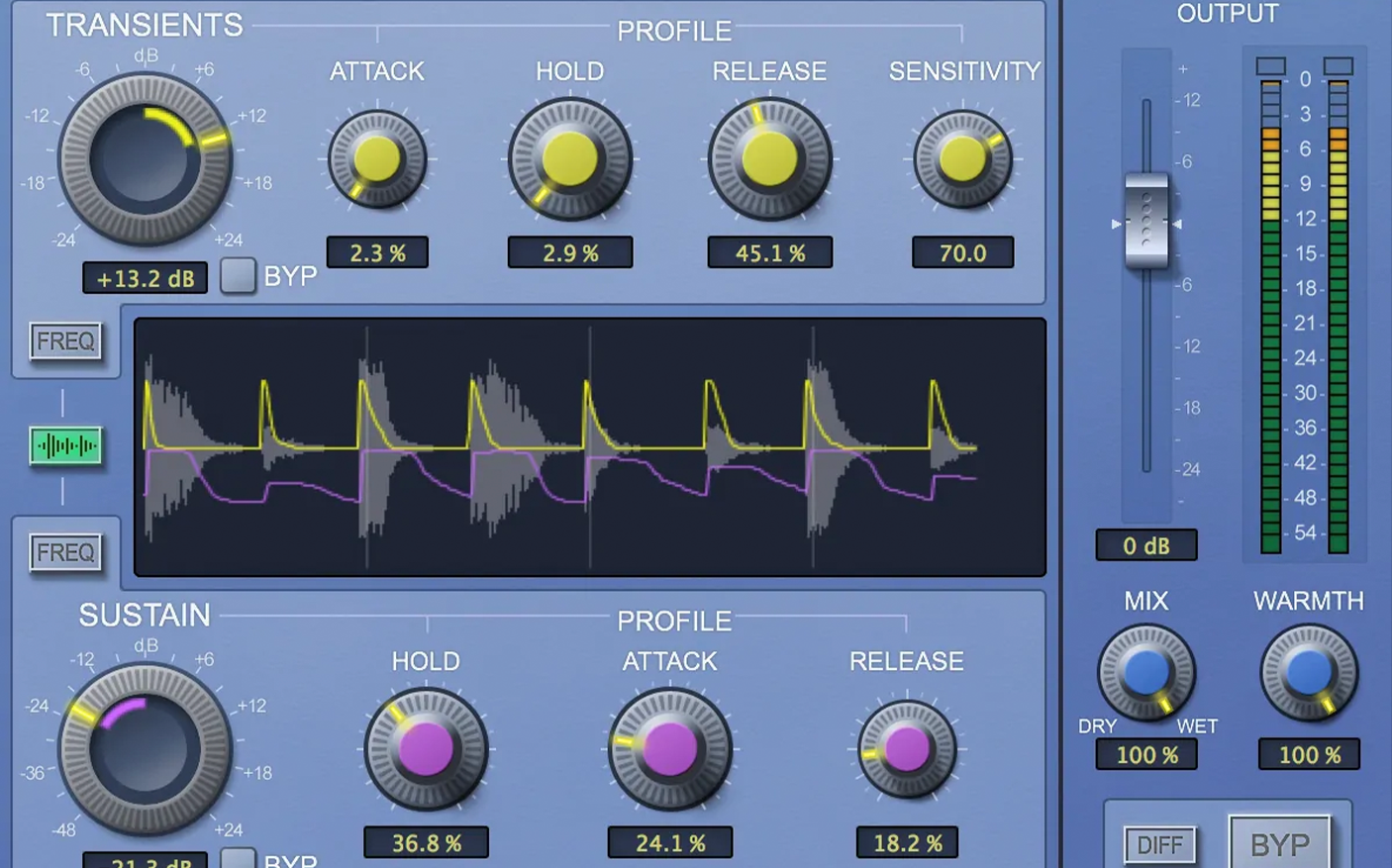The transient designer is a tool that is often forgot about or not even known about. For us at Audio Animals it’s an essential tool. All transient designers work in a similar way, they all achieve the goal of shaping the transients. But which one should you buy, this is what we are going to discuss here.
Firstly lets quickly go over the question….
What is a transient designer?
A transient designer is a tool used to shape the transients of a sound. For instance on a snare drum the attack can be increased on the snare to add more snap and punch to the beginning of the sound. The sustain can be increased to allow more release of the snare drum. Imagine a transient designer as an ADSR but you only have the attack and sustain controls. It works in far more depth than a simple ADSR but works in a similar way.
Ok let dive straight into the question were here to answer….
Which transient designer should I buy?
All transients designers are similar, all will work in a similar way but some have a lot more in depth features that make designing your transients easier and to a better effect.
The SPL Transient Designer
This version of the transient designer for me is what I grew up using. The hardware version was one of the first of it’s kind and was a tool that was found in almost every studio before plugins became so popular. The plugin is still to this day the most popular and the transient designer you think about when someone mentions a transient designer. But is it the best? Well it’s good, it does the job and it does it very well. Out of all the transient designers I have this is the one I will use most often. I will use this version if I need to design the transients across the entire frequency range. I find the SPL to be one of the most pleasing to the ear. With regards to features the SPL version is as simple as it gets. Two main controls attack and sustain. A simple but very effective transient designer.

The Elysia Nvelope Transient Designer
Now this transient designer is one I love. Not that I don’t love the SPL transient designer. But this one I really love. So much so I bought the 500 series Elysia Nvelope for our mastering studio to use as a transient shaper in the mastering chain. The SPL and Elysia versions are similar but the Elysia has a key feature that makes it more versatile. You can select the frequency range in which you add or decrease the amount of attack or sustain. So what does this mean? Well it means that by selecting to use the transient designer in this mode you can increase the attack on a snare drum in a specific frequency such as the 200Hz sweet spot. By doing so you add punch to the snare in the low end adding attack to the body and not to the higher frequencies that may cause the snare to become harsh. Then you may wish to add sustain to the top of the snare so that the high frequencies ring out more. Rather than if you were to use an SPL transient designer for this when increasing the sustain amount the low end can rumble.

The Sonnox Envolution Transient Designer
The third on the list is one of my favourites and the newest on the list. This transient designer takes it to the next level. Whilst it does do the same as the other transient designers, it has got a great extra feature the visual display. Which is incredibly helpful to see in detail what the transient designer is doing. The yellow line indicates the amount of attack change there is and the purple line indicates the amount of sustain change there is. Additional features include the sensitivity parameter which determines the amount attack. Using this you can set the transient designer up how you like it then play with the sensitivity increasing and decreasing to see if it sounds better with more or less transient designer plugin active. Think of it like a wet mix almost. The visual display alone makes this a very useful transient designer even if you have both the SPL and Elysia versions.

The Native Instruments Transient Master Transient Designer
The last in the list of transient designers I own and use is the cheapest of them all. Not because it’s bad at all. It essential is exactly the same as the SPL transient designer. Only has two features like the SPL attack and sustain. It’s not as sweet sounding as the original SPL version but as a cheap version of this transient designer it’s in this list as an option. I personally would never have bought this plugin myself. It came free with my Komplete bundle so it’s installed but never used. It’s a good transient designer does what you want it to do, nothing fancy, cheap and cheerful.

The Conclusion
All transient designers are good. Some have a few extra features and can provide more scope of sound. But the questions I am here to answer is which one would I buy. Sorry SPL I’ve used your transient designer for many many years and will always continue to use it but I am going to have to go for the Elysia Nvelope transient designer. Only reason being is that I like the fact that you can pin point the frequency you are applying the transient designing to. And if you don’t want to use it in this way you can always switch it to full band mode where it’ll work in the same way as the SPL transient designer does.
If you don’t want to fork out $199 for a plugin wait for the sale on Plugin Alliance and get the SPL and Elysia for $49. I think I paid $29 for my Elysia Envelope in a deal a while back. If you can’t wait for the sale check to see if you have a transient designer that came stock with your DAW. You may have one that is perfectly good enough for what you want to do. I mean lets face it it’s not a crazy intricate plugin like an EQ or compressor. You could even demo the plugin alliance versions and see if your stock version sounds anywhere close in quality to the expensive versions.

